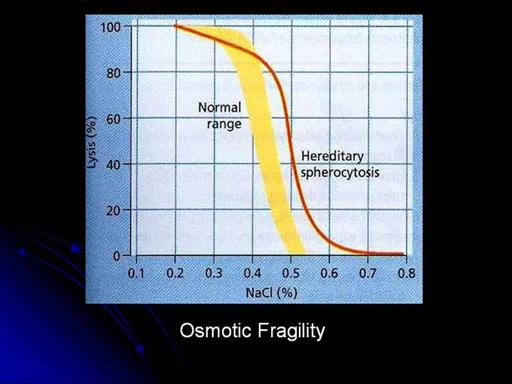| front |1 |2 |3 |4 |5 |6 |7 |8 |9 |10 |11 |12 |13 |14 |15 |16 |17 |18 |19 |20 |21 |22 |23 |24 |25 |26 |27 |28 |29 |30 |31 |32 |33 |34 |35 |36 |37 |38 |39 |40 |41 |42 |43 |44 |45 |46 |47 |48 |49 |50 |51 |52 |53 |54 |55|56 |review |
 |
Osmotic fragility measures red blood cell (RBC) resistance to hemolysis when exposed to a series of increasingly dilute saline solutions. The sooner hemolysis occurs, the greater the osmotic fragility of the cells.
The most sensitive test to help detect HS is the incubated osmotic fragility test performed after incubating RBCs for 18-24 hours under sterile conditions at 37°C.
•Hemolysis
of HS cells may be complete at a solute concentration that causes little
or no lysis of normal cells.
•Not
uncommonly, some individuals with HS have a normal fresh osmotic
fragility test result.
•Osmotic
fragility after prolonged incubation at 37°C usually is abnormal
|